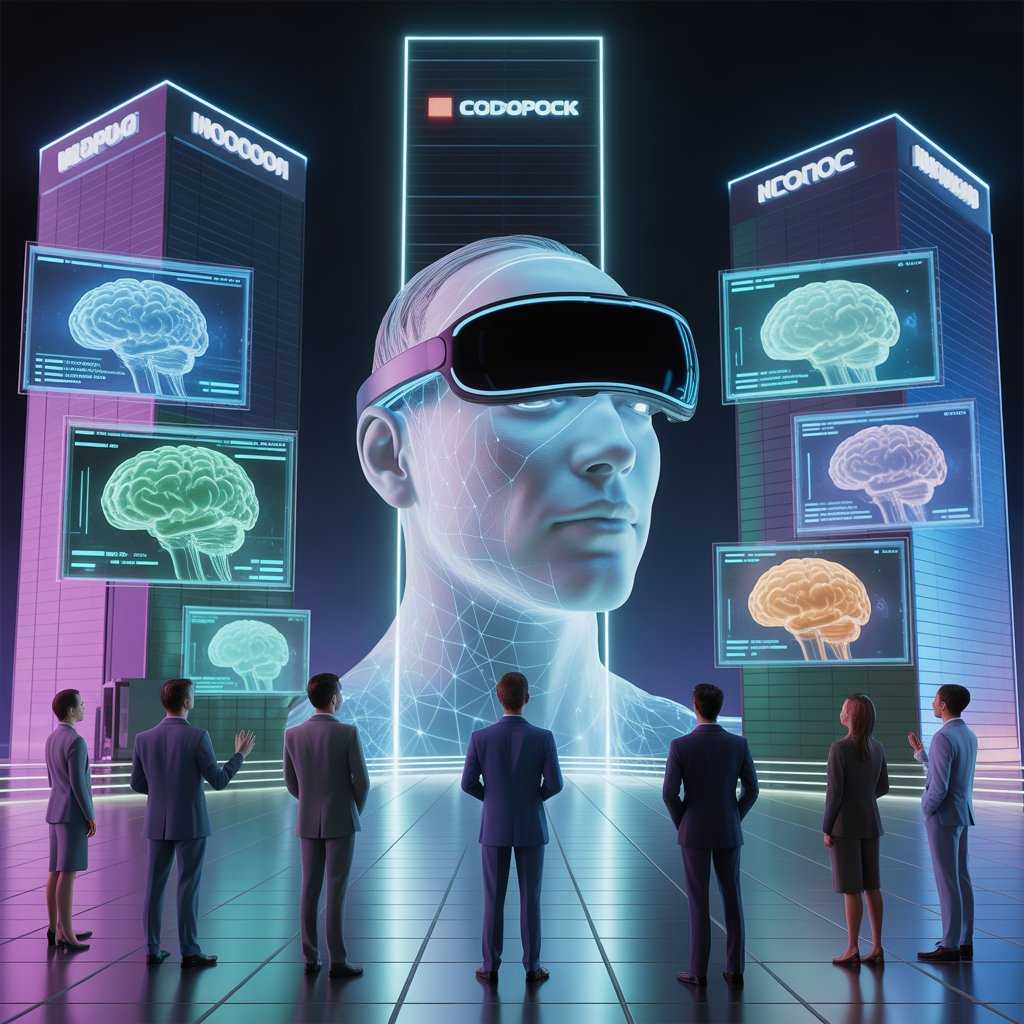1. Introduction
The evolution of artificial intelligence has reshaped how we interact with information, especially visual data. In today’s digital-first world, where billions of images are uploaded daily to social media, e-commerce platforms, and educational repositories, understanding what’s inside those images becomes essential. The AI Image Describer bridges that gap by automatically generating human-like descriptions for pictures, helping people and systems interpret visuals effortlessly.
This technology is not just for tech experts it’s empowering marketers, educators tools, accessibility advocates, and businesses of all sizes to make their content more discoverable and inclusive. As we move deeper into 2025, AI image description has become a vital component of content optimization, accessibility, and data interpretation.
2. What Is an AI Image Describer?
An AI Image Describer is an intelligent system that analyzes a photo or graphic and produces a written explanation of what it depicts. Unlike traditional captioning tools, these systems rely on advanced machine learning algorithms, computer vision models, and natural language processing (NLP) to interpret visual information the same way a human would.
In essence, an AI image describer converts visual data into understandable text. This helps computers “see” images in a human-like way, making visual content searchable, accessible, and more meaningful for digital systems and users alike.
2.1 Real-World Example
Imagine uploading an image of a young boy holding an umbrella while standing in the rain. The AI Image Describer might produce this caption:
“A young boy holding a blue umbrella is standing under the rain on a wet street.”
This example highlights how AI combines object recognition (boy, umbrella, rain) with context understanding (he’s standing under the rain), creating descriptions that are accurate, natural, and useful.
2.2 Why It Matters
AI image describers are not just about convenience they represent a shift toward universal accessibility. People with visual impairments, content creators optimizing for SEO, and researchers analyzing large image datasets all benefit from this technology.
3. How AI Image Description Works
AI image description is a multi-step process that merges visual recognition with language generation. It relies on deep learning models trained on millions of image-text pairs to understand both what an image shows and how to describe it naturally.
3.1 Step 1: Image Recognition
At the foundation of AI image describers lies computer vision, where convolutional neural networks (CNNs) scan the image pixel by pixel. These models identify shapes, colors, objects, and facial features. For example, a CNN can recognize that there’s a “cat,” “chair,” and “table” within a single image , similar to how the human eye perceives details.
3.2 Step 2: Feature Extraction
Once the objects are recognized, the system transforms them into feature vectors — numerical values representing image characteristics. This structured data helps the AI model understand spatial relationships, such as one object being in front of another or smaller in scale.
3.3 Step 3: Context Understanding
This is where the real intelligence appears. The model doesn’t just know what’s in the image — it interprets relationships between elements. It determines that “a person is sitting on a bench” rather than simply listing “person” and “bench.” This stage uses advanced models like Transformers and attention mechanisms to establish logical context.
3.4 Step 4: Text Generation
After understanding the visual elements, the system uses NLP models (like GPT, BERT, or T5) to generate grammatically correct, meaningful sentences. These models ensure the captions are human-like and coherent, not robotic or fragmented.
3.5 Step 5: Learning and Feedback
Modern AI image describers improve continuously through machine learning feedback loops. When users correct captions or provide feedback, the AI updates its knowledge, enhancing accuracy for future descriptions.
4. Key Features of AI Image Describers
Modern AI image describers come packed with advanced capabilities that make them powerful tools for businesses and individuals alike. Below are the most common and valuable features:
| Feature | Explanation |
| Automatic Captioning | Instantly generates human-like captions based on the image content without any manual effort. |
| Object & Scene Detection | Identifies multiple objects, people, and backgrounds in a single image, allowing for complex contextual understanding. |
| Emotion Recognition | Detects facial expressions or mood indicators, such as happiness, sadness, or surprise. |
| Accessibility Enhancement | Provides textual descriptions for people with visual impairments, improving inclusivity. |
| API Integration | Allows developers to connect AI image description tools with apps, websites, or automated systems. |
These features ensure that the technology is not only intelligent but also practical, scalable, and adaptable across industries.
5. Why AI Image Describers Are Important
AI image describers have transformed how we interact with online visuals, offering both practical and social benefits. Their importance spans across accessibility, SEO, e-commerce, education, and security.
5.1 Accessibility
AI image describers ensure that visually impaired individuals can experience web content through descriptive captions that explain what’s shown. This aligns with global accessibility standards like WCAG (Web Content Accessibility Guidelines) and supports inclusivity on digital platforms.
5.2 SEO and Digital Marketing
Since search engines can’t visually interpret images, AI-generated descriptions help fill that gap. By creating SEO-optimized alt texts, businesses can improve visibility in Google Images, drive traffic, and enhance overall content ranking.
5.3 Security and Surveillance
In security systems, AI describers assist in identifying suspicious activity or abnormal patterns in video footage, helping authorities detect potential threats more efficiently.
5.4 E-Commerce and Product Management
Online stores use AI image describers to generate consistent, high-quality product captions. This automation reduces time spent writing manual descriptions and enhances user experience with accurate visuals.
5.5 Research and Education
Researchers use AI image describers to annotate visual datasets for studies or AI training, while educators can leverage them to generate learning materials with visual explanations.
6. Benefits of Using AI Image Describers
- Enhanced Accessibility – Provides inclusivity for individuals who rely on screen readers by offering accurate image descriptions.
- Faster Workflow – Reduces the time needed for manual captioning, allowing teams to handle thousands of images daily.
- Improved SEO Results – Boosts organic visibility with relevant alt-text that search engines recognize.
- Higher Consistency – Maintains a professional and standardized tone across large image collections.
- Continuous Improvement – Machine learning allows the system to evolve, becoming more accurate with every use.
7. Popular AI Image Describer Tools (2025)
Here’s a look at some of the top AI image description tools in 2025, each serving different purposes depending on business or personal needs:
| Tool | Description | Best For |
| Microsoft Azure Computer Vision | Offers robust API-based captioning and object recognition for enterprise-scale use. | Developers & Enterprises |
| Google Cloud Vision AI | Recognizes objects, texts, and logos, integrating seamlessly with cloud workflows. | Cloud-Based Businesses |
| Clarifai | Provides custom AI models for tailored image and video recognition needs. | AI Researchers |
| Amazon Rekognition | Focuses on security, identifying people, activities, and scenes in real-time. | E-Commerce & Surveillance |
| AltText.ai | Specialized in generating SEO-friendly alt texts for bloggers and marketers. | Content Creators & SEO Experts |
How to Use AI Image Describers Effectively
The true value of an AI image describer lies in how you implement it within your workflow. Whether you are a content creator, developer, marketer, or educator, using these tools strategically can save time, improve SEO, and make your content more inclusive.
8.1 Step 1: Upload or Input Image URL
Begin by selecting the image you want to analyze. Most AI image describers allow either file uploads or direct URL inputs, making it easy to work with online visuals. For example, marketers often upload product images, while developers might use a URL to process thousands of photos through an API.
8.2 Step 2: Select the Right AI Model or Service
Different tools have different strengths. For accessibility projects, a model emphasizing context and clarity is essential. For e-commerce, focus on tools that highlight object accuracy and brand tone. Choose based on your goals — accuracy, speed, or SEO enhancement.
8.3 Step 3: Generate and Review the Description
Once the image is analyzed, the AI generates a description. However, this isn’t the final step. Review the output to ensure that the tone, context, and structure match your content’s purpose. For example, for brand marketing, add emotional or persuasive touches.
8.4 Step 4: Edit for Human Readability
Even the most advanced AI outputs may need fine-tuning. Adjust grammar, flow, and tone for a more natural human feel. This step helps your content remain authentic while maintaining SEO strength.
8.5 Step 5: Optimize for SEO and Integration
Incorporate relevant keywords, metadata, and semantic phrases into the caption. For instance, instead of “A man using a phone,” use “A man browsing a smartphone in a modern office environment.” Such phrases improve both clarity and search visibility.
8.6 Step 6: Apply Descriptions Across Platforms
Use your finalized AI-generated descriptions as alt text, metadata, or social captions. This enhances user engagement, accessibility compliance, and discoverability across platforms like Google Images, Pinterest, and e-commerce sites.
9. Challenges and Limitations
While AI image describers are powerful, they’re not perfect. Like all AI systems, they face technical, ethical, and contextual challenges that can affect accuracy and trust. Understanding these limitations helps users implement the technology responsibly.
9.1 Contextual Misinterpretation
AI can describe what it sees, but not always why. For instance, an AI may describe a protest scene as “a group of people holding signs,” without understanding the political or emotional significance behind it. This limits the depth of interpretation.
9.2 Cultural and Social Bias
Because AI models are trained on large datasets, they may unintentionally inherit cultural or gender biases. For example, associating certain activities or roles with specific genders. Ongoing retraining and diverse data sources can help mitigate these biases.
9.3 Privacy and Ethical Concerns
AI image describers often process sensitive or personal images. Without strict data-handling policies, user privacy can be at risk. Therefore, always ensure the platform follows GDPR and data protection regulations.
9.4 Dependence on Image Quality
Poor lighting, low resolution, or distorted visuals can lead to inaccurate descriptions. To ensure precision, always use high-quality images or apply preprocessing techniques like brightness correction and denoising.
9.5 Creativity Limitations
AI excels at factual description but struggles with emotionally expressive language. It may describe “a couple watching the sunset” but fail to capture the romantic nuance of the moment. This gap highlights the ongoing need for human-AI collaboration.
10. Future of AI Image Describers (2025–2030)
As AI continues to evolve, the future of image description promises to be transformative. Between 2025 and 2030, AI describers are expected to go beyond static captioning to offer contextual storytelling, real-time AR descriptions, and multi-language personalization.
10.1 Real-Time Descriptions in AR/VR Environments
Imagine wearing AR glasses that describe your surroundings in real time: “You are standing near a crosswalk. A red car is approaching.” This integration will revolutionize navigation, accessibility, and education, creating truly immersive experiences.
10.2 Integration with Voice Assistants
AI image describers will soon merge with tools like Alexa, Google Assistant, or Siri, allowing users to ask, “What’s in this picture?” and receive a spoken description. This accessibility feature could redefine how users interact with smart devices.
10.3 Multi-Language and Localization Features
Future systems will support instant translation, describing the same image in dozens of languages while preserving cultural context. This advancement will benefit global businesses and educational platforms alike.
10.4 Personalized Context Generation
AI will begin tailoring image descriptions based on user preferences or industries. For instance, a fashion retailer may receive stylistic terms (“vintage denim jacket”), while a security system might get behavioral cues (“person loitering near entrance”).
10.5 Artistic and Emotional Interpretation
Next-generation models may interpret artistic or emotional value, describing not only “what” an image shows but also “how” it feels — such as identifying mood, tone, or artistic style.
11. Ethical and Legal Considerations
With great power comes great responsibility. The use of AI image describers requires adherence to ethical principles and legal frameworks to ensure fair, secure, and transparent implementation.
11.1 Data Privacy
Always ensure that the platform you use complies with data privacy laws like GDPR and CCPA. Avoid uploading personal or confidential images to third-party systems that don’t guarantee encryption and data anonymity.
11.2 Transparency and Accountability
Users should always know when AI-generated descriptions are being used. Transparency fosters trust, especially in journalism, healthcare, and e-commerce, where image context matters.
11.3 Bias Mitigation
Developers must actively retrain models using diverse, inclusive datasets to prevent biased or inaccurate outputs. Regular audits can ensure the AI reflects fair representation across demographics.
11.4 Responsible Use for Accessibility
While AI describers aid accessibility, misuse can arise when descriptions are exaggerated, misleading, or promotional. Ensure your captions remain factual, neutral, and beneficial to users who rely on them for understanding visuals.
12. SEO Impact of AI Image Describers
AI image describers are a hidden gem in the world of search optimization. By Generating high-quality alt text and metadata, they enhance search discoverability while improving user engagement.
12.1 Enhanced Alt Text for Images
AI-generated captions make it easier to add relevant, keyword-rich alt text for every image on your website — a crucial factor for ranking in Google Image Search.
12.2 Increased Organic Traffic
Well-described images improve visibility, leading to higher click-through rates from image search results. For blogs and e-commerce platforms, this translates into better traffic and conversions.
12.3 Improved Accessibility Rankings
Websites compliant with WCAG standards receive better SEO credibility. Google values accessibility and ranks inclusive sites higher, reinforcing your brand reputation.
12.4 Better User Experience and Engagement
Descriptive captions provide clarity, keeping users on your page longer. This reduces bounce rates and strengthens your page dwell time, a signal Google uses for ranking quality content.
12.5 Integration with AI SEO Tools
Many advanced SEO platforms now integrate AI image describers to automate visual optimization, saving marketers valuable time while maintaining high-quality results.
13. How to Choose the Right AI Image Describer
Not all AI image describers are created equal. Selecting the right one depends on your goals, scale, budget, and accuracy needs.
13.1 Accuracy and Reliability
Always review sample outputs and accuracy reports before committing. The best tools maintain at least a 90% accuracy rate with consistent performance across different image types.
13.2 Integration and Compatibility
Ensure the tool supports API access, CMS plugins, or cloud integration to fit smoothly into your workflow. For example, platforms like Shopify, WordPress, or Google Cloud Vision make automation seamless.
13.3 Customization and Scalability
Look for AI describers that allow custom model training for your niche — whether fashion, healthcare, or education. Scalable solutions can handle thousands of daily image uploads efficiently.
13.4 Pricing and Cost Efficiency
Evaluate pricing models — some tools charge per image, while others offer monthly packages. Choose a solution that balances quality with affordability.
13.5 Security and Data Protection
Opt for tools that clearly outline their data usage policy. Encryption, access control, and GDPR compliance are essential for safeguarding sensitive data.
14. Real-World Use Cases of AI Image Describers
AI image describers are no longer futuristic experiments — they’re real-world solutions transforming industries.
14.1 Accessibility Technology
Apps like Be My Eyes and Seeing AI use image describers to narrate scenes for visually impaired users. This provides independence and confidence in daily life activities like shopping, reading signs, or navigating streets.
14.2 Media and Journalism
News agencies use AI to quickly tag, describe, and archive visual content, reducing manual labor. Automated captions also help maintain consistent tone and branding.
14.3 E-Commerce and Retail
Online stores employ AI to create product descriptions directly from images, ensuring that product listings are SEO-friendly and visually appealing.
14.4 Healthcare and Medical Imaging
AI image describers assist doctors and researchers by identifying patterns in X-rays, MRI scans, or lab images, aiding in diagnosis and medical research.
14.5 Education and Learning Platforms
Educational platforms use AI to describe visual learning materials, making lessons more inclusive and interactive for students worldwide.
15. Conclusion
The AI Image Describer is redefining how humans and machines communicate visually. It merges the analytical power of AI with the expressive potential of language, turning static images into understandable, searchable narratives.
As technology continues to evolve, AI image describers will become an indispensable part of digital ecosystems — from improving accessibility to driving SEO strategies and automating creative workflows. They represent a fundamental shift toward a world where visual data becomes universally understandable.
In short, the AI Image Describer is not just a 2025 innovation — it’s a vision for a smarter, more inclusive future where images speak through technology.
16. Frequently Asked Questions (FAQs)
Q1: What does an AI Image Describer do?
It automatically interprets and describes the content of an image in human-like language, making visuals understandable and searchable.
Q2: Can AI Image Describers help with SEO?
Absolutely. They generate optimized alt text and metadata that improve image ranking and boost organic traffic.
Q3: Are these tools safe to use?
Yes, when using trusted providers that comply with privacy laws and encryption standards like GDPR.
Q4: How accurate are AI Image Describers?
Most leading systems achieve 85–95% accuracy, with continuous improvement through machine learning feedback.
Q5: What’s the future of AI Image Description?
Expect real-time descriptions in AR/VR, emotional interpretation, multi-language output, and personalized content generation by 2030.





One Comment